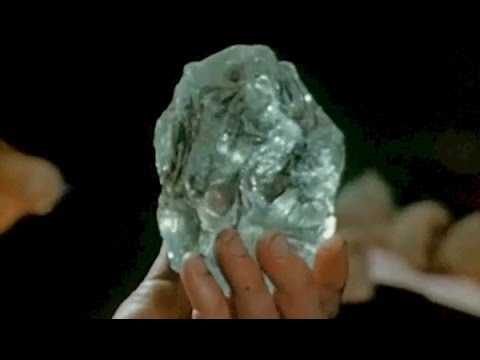more at
The preparation and manufacture of quartz crystals for radio communications during World War II.
Electronics playlist:
Public domain film from the Prelinger Archives, slightly cropped to remove uneven edges, with the aspect ratio corrected, and mild video noise reduction applied.
The soundtrack was also processed with volume normalization, noise reduction, clipping reduction, and/or equalization (the resulting sound, though not perfect, is far less noisy than the original).
Quartz is the second most abundant mineral in the Earth’s continental crust, after feldspar. It is made up of a continuous framework of SiO4 silicon–oxygen tetrahedra, with each oxygen being shared between two tetrahedra, giving an overall formula SiO2.
There are many different varieties of quartz, several of which are semi-precious gemstones. Especially in Europe and the Middle East, varieties of quartz have been since antiquity the most commonly used minerals in the making of jewelry and hardstone carvings…
Piezoelectricity
Quartz crystals have piezoelectric properties; they develop an electric potential upon the application of mechanical stress. An early use of this property of quartz crystals was in phonograph pickups. One of the most common piezoelectric uses of quartz today is as a crystal oscillator. The quartz clock is a familiar device using the mineral. The resonant frequency of a quartz crystal oscillator is changed by mechanically loading it, and this principle is used for very accurate measurements of very small mass changes in the quartz crystal microbalance and in thin-film thickness monitors…
A crystal oscillator is an electronic oscillator circuit that uses the mechanical resonance of a vibrating crystal of piezoelectric material to create an electrical signal with a very precise frequency. This frequency is commonly used to keep track of time (as in quartz wristwatches), to provide a stable clock signal for digital integrated circuits, and to stabilize frequencies for radio transmitters and receivers. The most common type of piezoelectric resonator used is the quartz crystal, so oscillator circuits incorporating them became known as crystal oscillators, but other piezoelectric materials including polycrystalline ceramics are used in similar circuits.
Quartz crystals are manufactured for frequencies from a few tens of kilohertz to hundreds of megahertz. More than two billion crystals are manufactured annually. Most are used for consumer devices such as wristwatches, clocks, radios, computers, and cellphones. Quartz crystals are also found inside test and measurement equipment, such as counters, signal generators, and oscilloscopes…
Piezoelectricity was discovered by Jacques and Pierre Curie in 1880. Paul Langevin first investigated quartz resonators for use in sonar during World War I. The first crystal-controlled oscillator, using a crystal of Rochelle salt, was built in 1917 and patented in 1918 by Alexander M. Nicholson at Bell Telephone Laboratories, although his priority was disputed by Walter Guyton Cady. Cady built the first quartz crystal oscillator in 1921. Other early innovators in quartz crystal oscillators include G. W. Pierce and Louis Essen.
Quartz crystal oscillators were developed for high-stability frequency references during the 1920s and 1930s. Prior to crystals, radio stations controlled their frequency with tuned circuits, which could easily drift off frequency by 3-4 kHz. Since stations were assigned frequencies only 10 kHz apart, interference between adjacent stations due to frequency drift was common. In 1925 Westinghouse tried out a crystal oscillator in its flagship station KDKA, and by 1926 quartz crystals were used to control the frequency of many broadcasting stations and were popular with amateur radio operators. In 1928, Warren Marrison (of Bell Telephone Laboratories) developed the first quartz crystal clock…
Using what are now considered primitive methods, about 100,000 crystal units were produced in the United States during 1939. Through World War II crystals were made from natural quartz crystal, virtually all from Brazil. Shortages of crystals during the war caused by the demand for accurate frequency control of military and naval radios and radars spurred postwar research into culturing synthetic quartz, and by 1950 a hydrothermal process for growing quartz crystals on a commercial scale was developed at Bell Laboratories. By the 1970s virtually all crystals used in electronics were synthetic…

